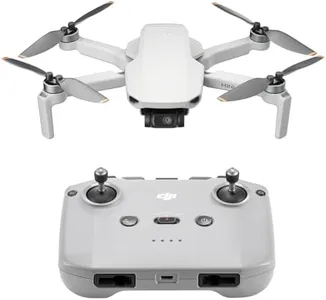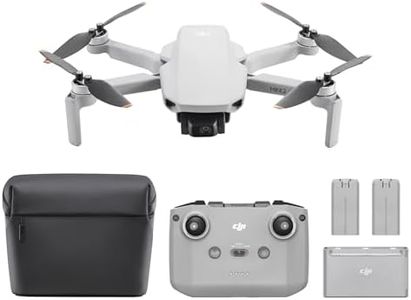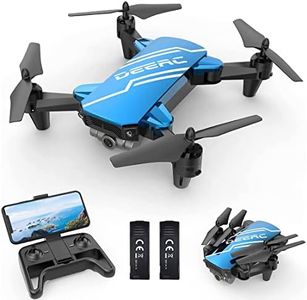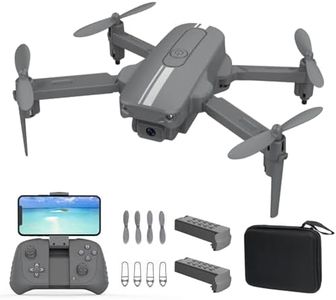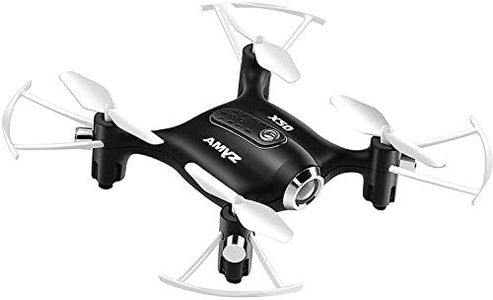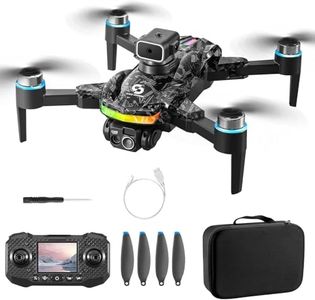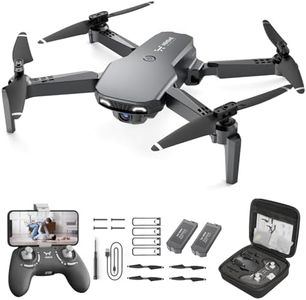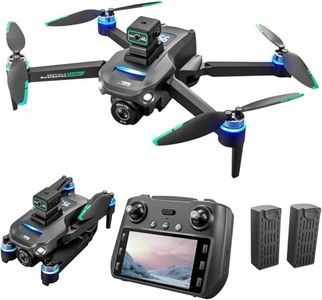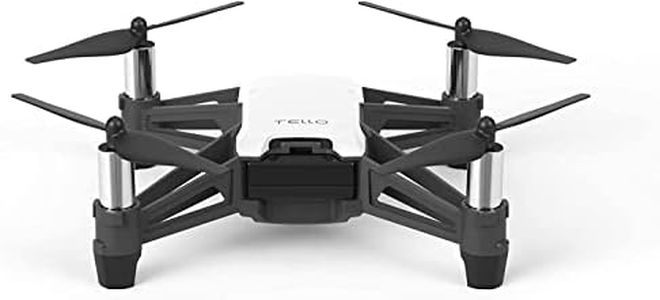We Use CookiesWe use cookies to enhance the security, performance,
functionality and for analytical and promotional activities. By continuing to browse this site you
are agreeing to our privacy policy
10 Best Affordable Drones
From leading brands and best sellers available on the web.Buying Guide for the Best Affordable Drones
Choosing the right drone can be exciting, but there are a few important things to keep in mind before you buy. First, think about what you expect from the drone: do you want to shoot videos, take photos, or just learn to fly for fun? Different drones come with various features and levels of ease-of-use. It's also important to consider the learning curve, as some basic drones are made for beginners, while others offer advanced controls better suited to experienced users. Look at what you want to achieve—this will help you filter out options and make the shopping process smoother.Camera QualityCamera quality determines how sharp and detailed your photos and videos will be. Typically, affordable drones feature cameras ranging from VGA resolution up to 4K. A lower resolution (such as 720p) will be fine if you just want to have fun and share casual images, while higher resolutions (1080p or above) are better for more serious photography and clearer video. Choose a camera quality based on how important high-quality images or videos are to you, and whether you'll be using the footage for social media, personal memories, or creative projects.
Flight TimeFlight time is how long your drone can stay in the air on a single battery charge. Most affordable drones offer flight times between 7 to 30 minutes. Shorter flight times (under 10 minutes) are good for quick practice sessions, while longer times (nearer to 20–30 minutes) are better if you want to explore more or film longer scenes. Think about how patient you are with recharging or swapping batteries, and choose a model whose flight duration won’t interrupt your enjoyment.
Control RangeControl range refers to how far you can pilot your drone from the remote or your smartphone. Affordable drones might have a short range (50–100 meters), while others offer longer ranges (200 meters or more). If you only want to fly close by in a park or garden, a short range is enough. But, if you plan to film larger areas or fly over wide open spaces, a longer control range is more practical.
Stability and Ease of UseStability tells you how easily the drone can hover and handle wind, while ease of use covers features like auto-hover, one-key takeoff, or headless mode. If you're a beginner, drones with built-in stabilization (gyroscopes or GPS) and easy controls will help you learn faster and avoid crashes. More advanced drones require more skill but offer more manual control. Choose a mix of these qualities that matches your comfort level—beginners benefit from lots of automation, while experienced flyers might seek out manual controls.
PortabilityPortability is about how easy it is to carry your drone with you. Compact or foldable designs are easier to transport and are handy if you want to bring your drone on travels or hikes. Larger drones may have better features, but are less convenient to take everywhere. Decide if you’ll be flying mostly at home or if you want something that can go in your backpack.
Replacement Parts and SupportAffordable drones can sometimes break or need new parts like propellers or batteries. Availability of replacement parts and customer support means you can easily repair or maintain your drone. Check if it's easy to buy spare parts for the model you're considering, especially if you plan to fly often or are new and more likely to have small crashes.


